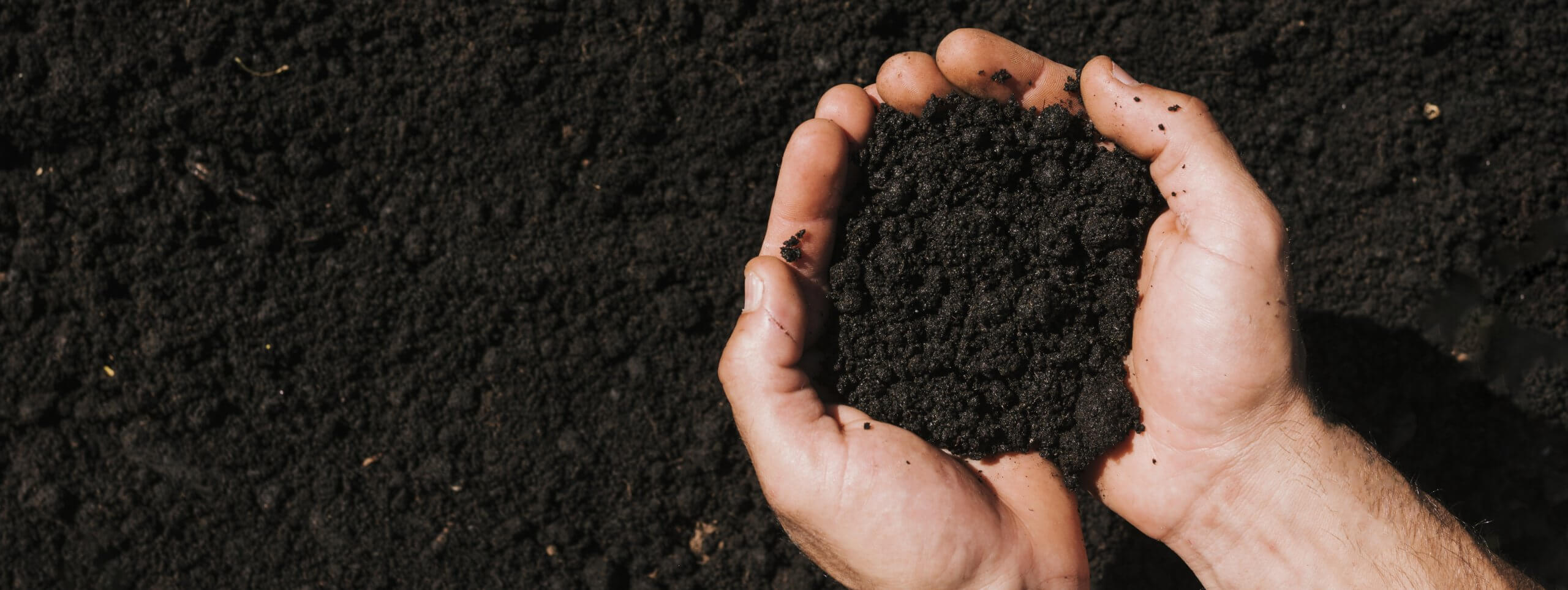Humus is often called the black gold of the earth. Yet it is still a bit of mystery as to what this substance actually is.
Soil organic matter is the collective term for material that is decomposing at various rates in the soil. It includes microbial mass, litter, light fraction, water-soluble organics and then humus. Humus is a stabilized fraction of organic matter and is a general term referring to a heterogeneous mixture of different humic substances. These substances include humic acid, fulvic acid, and humin.
Humus is resistant to decay and that is why it is referred to as the “stabilized” fraction of organic matter. This does not mean that it is completely immune to decay but implies that humic substances can remain intact in the soil for decades or centuries before being broken down and cycled back into where it came from. The demand for the cycling of humus depends on the availability of more readily available sources of nutrients, for example active carbon. Active carbon is a more labile fraction that serves as a readily available source of energy for the soil microbial community.
Origin of humus
Organic matter enters the soil as plant and animal residues. These get broken down by microbial organisms that dissolve and absorb the organic matter. The residues contain molecules such as carbohydrates, sugars, proteins, fats, waxes, and lignin. As microbial organisms metabolize the nutrients they require for growth and respiration, the remainder that don’t get used for growth and metabolism are excreted into the soil.
A by-product of microorganisms’ activities are nutrients like nitrogen and phosphorous in a mineral form that are readily available for plants to use. However, another by-product of microbes’ activity is biologically resistant carbon compounds. From these broken-down and altered minerals, humus can form by means of additional biological processes.
Humic and fulvic acid
Humic acid and fulvic acid are organic acids formed through microbial activity in the soil. There are some physical differences between the two as well as different benefits gained from each.
Humic acid (C9H9NO6) has a dark brown colour and is water soluble in alkaline conditions. Humic acid has various benefits to plants even though plant roots cannot absorb this acid because its molecular weight to too large. The benefits of humic acid include the following:
- preserve organic materials and trace elements and make them more available for plants
- protect roots from pathogen attacks
- reduce inflammation
- fight against malignant cell growth
Fulvic Acid (C14H12O8) has a yellowish-brown colour and a relatively small molecular weight compared to humic acid. Fulvic acid is water-soluble and can be taken up by plants. Some of the benefits of fulvic acid include the following:
- turn minerals and metals into ionic forms that become available to plants and are easily absorbed
- weather and dissolve silica
- help to transport immobile elements
- dissolve vitamins, coenzymes, auxins, hormones, and natural antibiotics and make them easily available
- increases the permeability of cell membranes to take-up nutrients into the cell
Further benefits of humus
Humic substances act as soil conditioners and help retain moisture in the soil for the plants’ use as well as creating a moist habitat for microbes to live in. Humus contributes to better soil structure. Humic substances are able to bind to clay and help to form clay aggregates. This results in clay soil being more porous, aerobic, soft, and have better drainage and root penetration. Furthermore, due to its stability, it can build nutrient reservoirs in the soil if managed correctly. This also means that carbon sequestered into the soil and stored as humus should not need to re-enter the atmosphere anytime soon (for decades at least) compared to the other forms of carbon that continuously cycle between soil, plant, and atmosphere as an active part of the carbon cycle.
Thus, the term humus, meaning “of and for the earth” seems very fitting for this complex grouping of substances.
- Protozoa and protozoa tea - 2021-04-07
- Green lacewings - 2021-03-01
- Understanding the black gold of the earth – humus. - 2021-02-02

